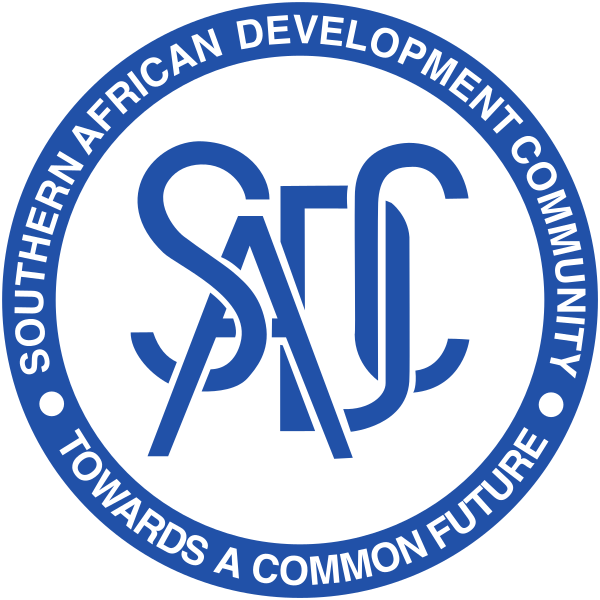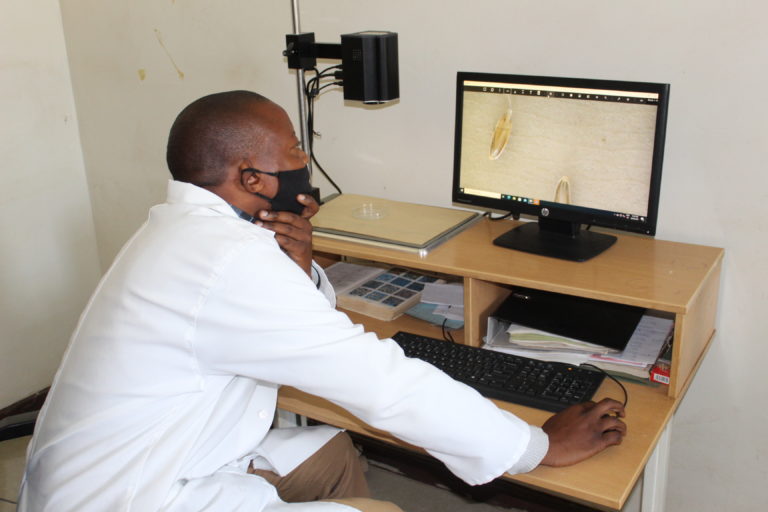Every National Seed Authority requires state-of-the-art equipment to enable seed purity testing. In late 2020, the Zambian Seed Control and Certification Institute (SCCI) reached out to USAID-managed Feed the Future Southern Africa Seed Trade Project (Seed Trade Project) flagging their need for a modern digital microscope. In response, the Seed Trade Project awarded the Institute a US$9,000 in-kind grant to procure the digital microscope. The high-end microscope was delivered in April 2021 and followed by virtual training on its proper use and functionality on May 20, 2021.
Food safety begins early in the food chain – from the moment seed is produced through the point food reaches the family table. Zambia’s Ministry of Agriculture aims to prevent, control, and contain plant diseases, invasive pests, and weeds as a way of enhancing both national and regional agricultural production, productivity, and food security. This is done through the SCCI, which is Zambia’s National Seed Authority (NSA). But for Zambia to trade high-quality seed internationally, it must be proficient in international standards such as the Other Seed Determination (OSD) tests, which are audited by the International Seed Testing Association (ISTA). Passing those audits had become a serious challenge, though – until now.
“SCCI had been using an obsolete microscope for OSD testing. Every time we sent results to ISTA, we were failing because we couldn’t identify the weeds in the samples,” says Mr. Bruce Chulu Simbunji, the SCCI Chief Seed Officer in charge of Testing Laboratory Services.
These failures threatened the country’s ISTA accreditation and position as Africa’s largest maize seed exporter. OSD tests are an ISTA requirement and were most recently adopted by the Southern African Development Community (SADC) Harmonized Seed Regulatory System (HSRS). As the regional policy for the production and trade of improved seed, the SADC HSRS ensures that Member States meet certain requirements for regional seed export, and in turn, protect the food people consume and their environment. All seed must be inspected and certified, confirming it is free of foreign seeds, pests, and plant diseases, as well as anything that would prove harmful to the food chain and human consumption.
“We are there to put controls on the quality of seed that is on the market. We don’t want junk out there. For quality control, seed testing is very vital. If a test fails, the poor seed won’t be released on the market, and this is a good thing for farmers who want to make something at the end of the day,” says Ms. Theresa Mutiti, SCCI Senior Seed Analyst.
With this new equipment, SCCI can meet expectations for quality seed control. “This is a modern digital microscope used in almost all ISTA accredited labs around the world. With it, SCCI has improved our ability to identify foreign bodies in ISTA samples (during audits). Purity testing will now be done accordingly because we have the necessary equipment,” stated Mr. Simbunji. “Further, with this new digital microscope, we can now see even the tiniest weed – this wasn’t possible with the previous microscope.”
Since its beginning, the Seed Trade Project has supported the SCCI in several other ways. In 2019, the Project installed a modern cold storage facility following a 2015 fire that destroyed the much smaller original facility. The new facility, equipped with a modern cooling system, can store up to 10,000 reference seeds for all 16 SADC Member States. The Project also supported SCCI with the installation of Zambia’s Online Seed Certification System, the Seed Lab, moving the Institute from paper-based to online service delivery for over sixty thousand clients. All these efforts contribute to the safe production and trade of seed across the SADC region, ultimately leading to increased food production, trade, and, ultimately, food security
About the Seed Trade Project
The Feed the Future Southern Africa Seed Trade Project is funded by the USAID Southern Africa Regional Mission, and implemented by DAI Global, LLC, from December 2015 to December 2021. The primary goal of the Project is to improve the availability of and access to high-quality seed in the Southern African Development Community (SADC) countries. It is designed to support SADC and Member States’ leadership by providing the necessary technical assistance for harmonizing policies and regulations governing seed trade in the region. The work facilitates seed trade across the region, integrating small and isolated national seed markets into one larger SADC-wide market trading high-quality seeds.
However, even for a motivated nation, Zambia’s journey to realize a fully domesticated national seed law proved a deliberate and determined process and took a total of seven years to complete. As one of the original signatories of the MoU in 2013, later that same year, Zambia re-aligned its National Seeds Act and Regulations to reflect the regional guidance. By 2018, Zambia had domesticated two out of three of the SADC HSRS components—the Seed Variety Release and Seed Certification and Quality Assurance, leaving only the Quarantine and Phytosanitary Measures for Seed.
In 2019, Zambia agreed to pressure-test the SADC HSRS with a partner seed company—Seed Co. Zambia Ltd. Through the Feed the Future Southern Africa Seed Trade Project, USAID invested $100K in support of a seed export pilot intended to move high-quality, hybrid maize seed, produced under the SADC HSRS, from Zambia to the Democratic Republic of Congo. With the support of other key partners, particularly the national seed authority, the Seed Control and Certification Institute, Seed Co. Zambia Ltd produced 226 MT of improved maize seed valued at $376K. Further, the export moved seamlessly across borders and sparked interest from many more seed producers vying to break into the SADC market.

